
The setaceous Hebrew character is a moth of the family Noctuidae. The species was first described by Carl Linnaeus in his 1758 10th edition of Systema Naturae. It is found in the Palearctic realm. It is a common species throughout Europe and North Asia and Central Asia, South Asia, China, Japan and Korea. It is also found in North America, from coast to coast across Canada and the northern United States to western Alaska. It occurs in the Rocky Mountains from Montana to southern Arizona and New Mexico. In the east, it ranges from Maine to North Carolina. It has recently been recorded in Tennessee.
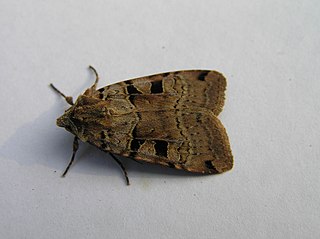
The double square-spot is a moth of the family Noctuidae. It is distributed through most of Europe except Portugal, the Mediterranean islands and northernmost Fennoscandia. In the East, the species ranges East across the Palearctic to Siberia and in the South-East to the Black Sea and in Iran. It rises to a height of about 2000 metres in the Alps.

The square-spot rustic is a moth of the family Noctuidae. It is found in Europe, North Africa and east across the Palearctic and in North America.

Xestia is a genus of noctuid moths. They are the type genus of the tribe Xestiini in subfamily Noctuinae, though some authors merge this tribe with the Noctuini. Species in this genus are commonly known as "clays", "darts" or "rustics", but such names are commonplace among Noctuidae. Xestia moths have a wide distribution, though they most prominently occur in the Holarctic.

Xestia baja, the dotted clay, is a species of moth of the family Noctuidae. It is found in Europe, Turkey, northern Iran, Transcaucasia, the Caucasus, central Asia, Siberia, Mongolia, Tibet, China, Korea and Japan.
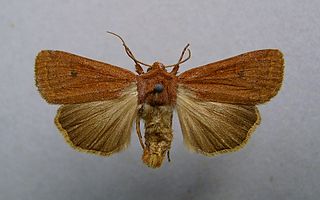
Xestia castanea, the grey rustic or neglected, is a moth of the family Noctuidae. It is found from central Europe to Morocco, Turkey, Lebanon, Israel, Jordan and Syria.
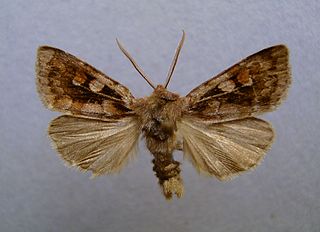
Xestia alpicola, the northern dart, is a moth of the family Noctuidae. It is found from northern Europe across the Palearctic to central Siberia and in the Alps.

Xestia ditrapezium is a moth of the family Noctuidae found in most of Europe, northern Turkey, northern Iran, Transcaucasia, Caucasus, central Asia, from the Altai to Ussuri, Amur, Kuril Islands, northern Mongolia, Tibet, China, Korea, and Japan.

Xestia stigmatica, the square-spotted clay, is a moth of the family Noctuidae. It is found in most of Europe, Transcaucasia, Caucasus, Kazakhstan, northern Turkey and northern Iran.
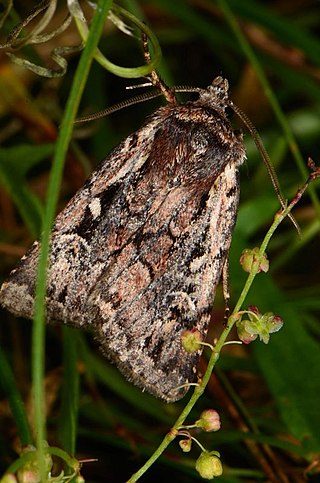
Xestia agathina, the heath rustic, is a moth of the family Noctuidae. It is found in western and central Europe and Morocco.

Xestia collina is a moth of the family Noctuidae. It is found in the Alps, from southern France to southern Poland, Romania, from southern Finland and Estonia to the Urals, Siberia and northern Mongolia.

Xestia trifida is a moth of the family Noctuidae. It is found in Romania, Ukraine, southern Russia, Turkey and Turkmenistan as well as the Iberian Peninsula.

Xestia staudingeri is a moth of the family Noctuidae. It is known from Siberia, as well as North America.

Xestia tecta is a moth of the family Noctuidae. In Europe the species is only known from the boreal area of Fennoscandia, north-western Russia and the northern Ural Mountains. Outside Europe it occurs in northern and central Siberia and the north-western USA including Alaska as well as north-western and central Canada.
Xestia lyngei is a species of moth belonging to the family Noctuidae.
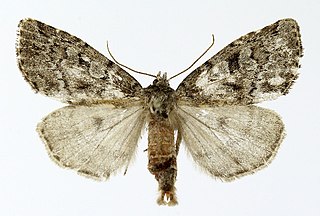
Xestia laetabilis is a species of moth belonging to the family Noctuidae.
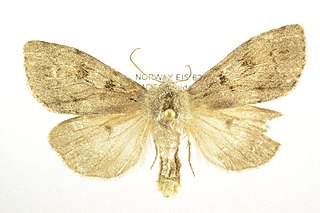
Xestia gelida is a species of moth belonging to the family Noctuidae, found in Fennoscandia and northern Russia. It was first collected by Jacob Sparre Schneider on an expedition in Sør-Varanger, Norway in 1882, and was described the following year. This was the only specimen known in Norway until 2010, when it was rediscovered in Nord-Trøndelag.
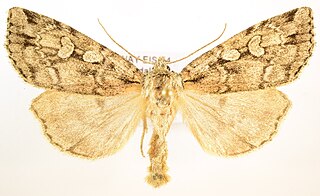
Xestia fennica is a species of moth belonging to the family Noctuidae. It was formerly considered a subspecies of Xestia rhaetica.
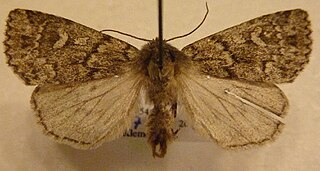
Xestia borealis is a species of moth belonging to the family Noctuidae.
Xestia atrata is a species of moth belonging to the family Noctuidae.


















